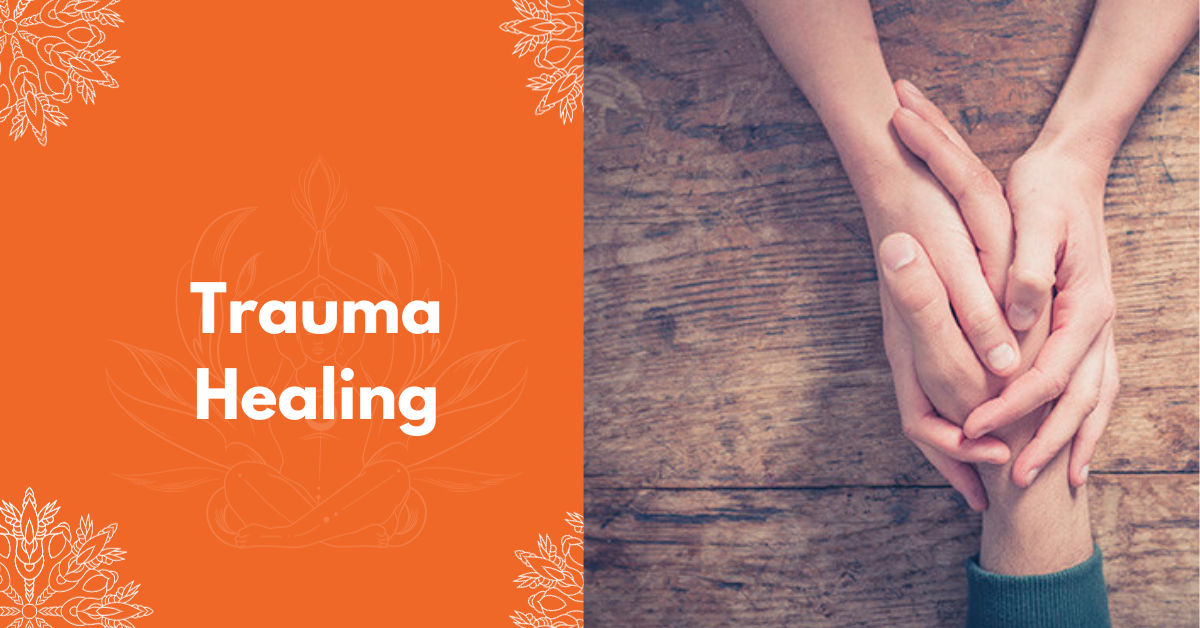
Trauma Healing Through Mindful Yoga Practices
Trauma healing is a deeply personal journey, and for many individuals, it begins with carrying the weight of distressing experiences, which can arise from accidents, violence, loss, or even childhood events. These experiences often overwhelm our ability to cope, leading to a range of symptoms affecting our mental, emotional, and physical well-being. In search of hope and healing, many have turned to the transformative power of yoga. In this article, we will explore how trauma healing can be initiated and guided by the mindful practice of yoga.
Understanding Trauma
Defining Trauma
Trauma refers to the emotional, psychological, and physical responses that occur when an individual experiences a distressing event or series of events that overwhelm their ability to cope. It can lead to a range of symptoms, including anxiety, depression, flashbacks, and even physical pain.
Types of Trauma

Trauma is not one-size-fits-all; it comes in various forms. Some common types of trauma include:
- Physical Trauma: Resulting from accidents, injuries, or medical procedures.
- Emotional Trauma: Stemming from experiences like abuse, neglect, or the loss of a loved one.
- Developmental Trauma: Occurring during childhood and impacting emotional growth.
- Complex Trauma: A combination of various traumas that often result in severe and long-lasting effects.
The Healing Power of Yoga
Yoga as a Holistic Approach
Yoga is not just a physical exercise; it is a holistic approach to healing that integrates the mind, body, and spirit. Through a combination of postures, breath control, meditation, and mindfulness, yoga offers a comprehensive toolkit for trauma survivors.
Regulating the Nervous System
One of the primary ways yoga aids in trauma healing is by regulating the autonomic nervous system. Trauma often leaves individuals in a state of hypervigilance, with a “fight or flight” response stuck in the “on” position. Yoga practices, such as deep breathing and gentle movements, help activate the parasympathetic nervous system, promoting relaxation and reducing anxiety.
Mindfulness and Self-Awareness
Trauma can disconnect individuals from their bodies and emotions. Yoga encourages mindfulness, helping individuals reconnect with their bodies, thoughts, and feelings. This self-awareness is a crucial step towards understanding and processing trauma.
Yoga Practices for Trauma Healing

Gentle Asanas (Physical Poses)
Yoga poses can be adapted to suit trauma survivors, focusing on gentle, non-invasive movements. Poses like Child’s Pose, Cat-Cow, and Savasana provide comfort and relaxation.
Pranayama (Breath Control)
Pranayama, Breathwork is central to trauma healing in yoga. Techniques like Box Breathing and Alternate Nostril Breathing help regulate emotions and reduce anxiety.
Meditation and Mindfulness
Guided meditation and mindfulness practices teach individuals to stay present and cultivate inner peace, vital for trauma recovery.
Finding Healing Through Yoga

Seek Professional Guidance
While yoga is a valuable tool for trauma healing, it is essential to work with a certified yoga instructor, therapist, or counselor who specializes in trauma-sensitive yoga. They can provide tailored guidance and support.
Patience and Self-Compassion
Healing from trauma is a journey that requires patience and self-compassion. Yoga teaches us to be gentle with ourselves and respect our unique paths to recovery.
Beyond Physical Healing
Emotional Release
Yoga provides a safe space for emotional release. As trauma survivors progress in their practice, they may experience cathartic moments during yoga sessions, allowing them to release pent-up emotions and find catharsis.
Empowerment and Self-Expression
Through yoga, trauma survivors can regain a sense of empowerment over their bodies and minds. It offers a platform for self-expression and self-compassion, helping individuals rebuild their self-esteem.
Yoga as a Lifelong Practice
Preventing Re-Traumatization
Yoga instructors trained in trauma-sensitive approaches understand the importance of creating a safe environment. They avoid physical adjustments and provide choices in poses to prevent re-traumatization.
Ongoing Self-Care
Yoga equips trauma survivors with self-care tools they can use throughout their lives. It offers coping mechanisms for managing triggers and stress, promoting long-term emotional resilience.
Yoga’s Role in Holistic Healing

Complementary Therapies
Many individuals find that yoga complements other therapeutic approaches, such as talk therapy or medication, in their trauma healing journey. It provides a well-rounded approach to recovery.
Building a Supportive Community
Yoga classes often become a source of support and community for trauma survivors. The shared experience of healing through yoga can foster connections and reduce feelings of isolation.
The Transformative Potential of Yoga

In summary, yoga is not just a physical practice but a profound journey of self-discovery and healing. It offers trauma survivors a path towards reclaiming their lives, one mindful breath and gentle movement at a time. While the road to recovery may be challenging, yoga provides a beacon of hope and resilience.
Yoga’s Gentle Approach
Tailored Practices
Trauma-sensitive yoga instructors understand the need for customization. They adapt practices to suit individual needs, ensuring that each session feels safe and supportive.
Non-Judgmental Space
In yoga for trauma healing, there is no competition, judgment, or comparison. Participants are encouraged to practice at their own pace, free from self-criticism.
Mind-Body Connection
Reconnecting with the Body
Trauma often leads to a disconnect between the mind and body. Yoga facilitates the process of reconnecting with physical sensations, fostering a sense of grounding and safety.
Emotional Regulation
Yoga teaches individuals to observe their emotions without judgment. This skill is invaluable for trauma survivors who may have struggled to manage overwhelming emotions.
Breath as a Lifeline
The Breath-Emotion Link
Yoga places a significant emphasis on breath control. Learning to regulate one’s breath can help manage emotional triggers and reduce the physiological response to stress.
Pranayama Techniques
Pranayama, or breath control exercises, are an essential aspect of trauma-sensitive yoga. Techniques like “4-7-8 Breath” and “Belly Breathing” provide immediate tools for calming the nervous system.
Establishing a Routine
Consistency is Key
For the full benefits of trauma-sensitive yoga to unfold, consistency is vital. Regular practice can gradually rewire the brain’s response to trauma triggers.
Self-Care Beyond the Mat
Yoga encourages holistic self-care practices, including mindfulness in daily life. This extends the benefits of yoga beyond the mat and into everyday situations.
Breaking the Isolation
Building Connections
Participating in trauma-sensitive yoga classes allows individuals to connect with others who may have experienced similar challenges. This sense of belonging can be a powerful part of the healing process.
Sharing Stories
In some trauma-sensitive yoga sessions, participants may have the opportunity to share their experiences if they choose to. This sharing can be a therapeutic release and help reduce feelings of isolation.
Embracing the Journey
In closing, yoga for trauma healing offers a path towards recovery that is gentle, empowering, and transformative. It is a journey of self-discovery, resilience, and reconnection with one’s body and emotions.
Conclusion
Trauma healing is a deeply personal journey, and yoga serves as a compassionate companion on this path. Through its mindful practices, yoga empowers trauma survivors to regain control over their bodies and minds, fostering resilience and promoting emotional well-being. So, if you’ve experienced trauma and are seeking a holistic approach to healing, consider embarking on the transformative journey of yoga.
FAQs
1. Can yoga completely heal trauma?
- While yoga can be a powerful aid in trauma healing, it may not provide a complete cure. It is often used in conjunction with other therapies for comprehensive recovery.
2. Is yoga suitable for all types of trauma?
- Yoga can be adapted to accommodate various forms of trauma, but it’s crucial to practice with a qualified instructor who understands trauma sensitivity.
3. How long does it take to see the effects of yoga on trauma healing?
- The timeline for healing varies from person to person. Some may experience positive changes relatively quickly, while others may require more time and consistency.
4. Can I practice yoga for trauma healing on my own?
- While some yoga practices can be done independently, it’s recommended to work with a trained instructor, especially when dealing with trauma.
5. Are there specific yoga styles best suited for trauma healing?
- Hatha yoga, gentle yoga, and restorative yoga are often recommended for trauma survivors due to their focus on relaxation and mindfulness. However, the choice of style should be personalized based on individual needs and preferences.

